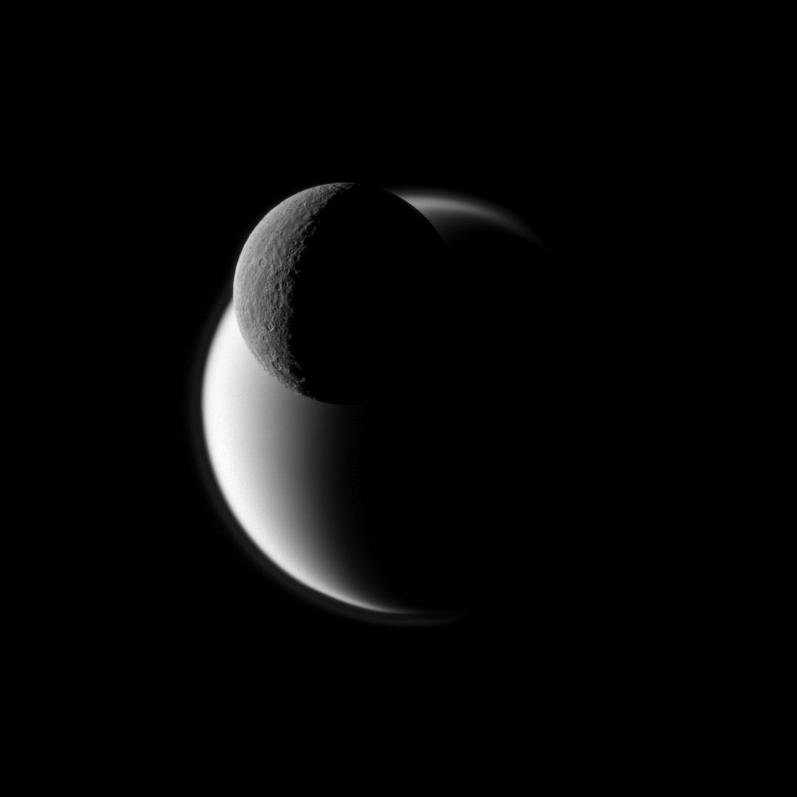Biggest Saturnian Moons

| PIA Number | PIA12724 |
|---|---|
| Language |
|
A darkly defined Rhea passes before the fuzzy orb of Titan in this Cassini view of Saturn's two largest moons.
Rhea is closer to the spacecraft in this view. See Ancient Plains of Rhea to learn more about Rhea. See Haze Layers on Titan to learn about Titan's atmosphere.
Lit terrain seen here is on the Saturn-facing sides of Rhea (1,528 kilometers, or 949 miles across) and Titan (5,150 kilometers, or 3,200 miles across).
The image was taken in visible blue light with the Cassini spacecraft narrow-angle camera on Nov. 19, 2009. The view was acquired at a distance of approximately 1.1 million kilometers (684,000 miles) from Rhea and at a Sun-Rhea-spacecraft, or phase, angle of 118 degrees. The view was acquired at a distance of approximately 2.3 million kilometers (1.4 million miles) from Titan and at a Sun-Titan-spacecraft, or phase, angle of 118 degrees. Image scale is 7 kilometers (4 miles) per pixel on Rhea and 14 kilometers (9 miles) on Titan.
The Cassini-Huygens mission is a cooperative project of NASA, the European Space Agency and the Italian Space Agency. The Jet Propulsion Laboratory, a division of the California Institute of Technology in Pasadena, manages the mission for NASA's Science Mission Directorate, Washington, D.C. The Cassini orbiter and its two onboard cameras were designed, developed and assembled at JPL. The imaging operations center is based at the Space Science Institute in Boulder, Colo.
For more information about the Cassini-Huygens mission visit http://saturn.jpl.nasa.gov . The Cassini imaging team homepage is at http://ciclops.org .
Credit: NASA/JPL/Space Science Institute
